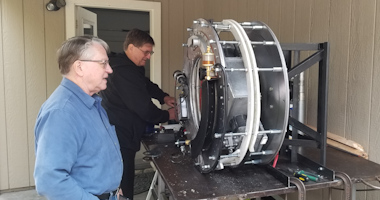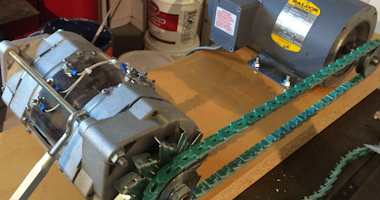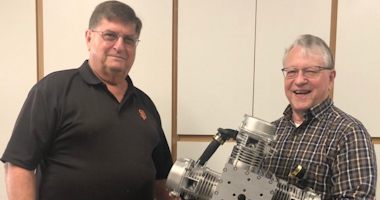Frequently Asked Questions
- What is a WolvertonBailey or Counterpoise Engine?
- What makes the Counterpoise Engine revolutionary?
- Is there anything else in the design that will improve on performance?
- What group came up with the idea of the Counterpoise Bi-Radial Engine?
- What difference can all these advantages make?
- When can I expect to see the Counterpoise Engine in a power generator?
- MEP or MEPw? That is the question!
What is a WolvertonBailey or Counterpoise Bi-Radial Engine?
- It is a revolutionary new internal combustion engine design that is much more efficent with significantly lower emissions. Additionally it can run on multiple fuels without redesign.
What makes the Counterpoise Bi-Radial Engine revolutionary?
- It has a breakthrough patented design that counter rotates the bore assembly from the drive shaft. This allows the pistons to complete two cycles per revolution instead of just one.
Is there anything else in the design that will improve on performance?
- The bore angle is designed to capture the backpressure on the bore and it augments the counter rotation and improves efficiency even further. Resulting in an engine design that will produce almost twice as much torque as conventional engine designs. Doing this with half as many pistons.
What group came up with the idea of the Counterpoise Bi-Radial Engine?
- Believe it or not, Mr. Wolverton was inspired with the concept and design through a dream.
What difference can all these advantages make?
- Check out our link called "7 Advantages" for more information. However, a short version would be our engine is smaller and weighs less, and would provide the same power as a V-8 engine with just 4 cylinders. Having fewer parts means much lower manufacturing cost.
When can I expect to see the Counterpoise Bi-Radial Engine in a power generator?
- Our 4-cylinder prototype already turns an alternator to generate power for demo purposes. For commercial deployment, we are raising funds to build a handful of these engines and take them through formal EPA certification testing.
MEP or MEPw? That is the question!
- During the development of our Engine, we discovered a number of improvements
that the Counterpoise Bi-Radial Engine has over the Otto Cycle or the standard
engine. We also discovered some improvements that could retrofit the standard
engine to improve its performance as well.
One major improvement we discovered was how and why the standard Otto Cycle engine is evaluated for efficiency. The term Mean Effective Power or (MEP) is used to describe how all Otto Cycle engines lose power when they have an advance spark (before Top Dead Center). This is due to the fact the fuel is burning before TDC and is trying to run the engine backward. The only reason it does not run backward is the fact the forward momentum of the flywheel pushes the engine through it.

Because the Counterpoise Bi-Radial Engine does not have this problem of trying to run the engine backwards, MEP cannot be used to evaluate our engine. One major factor is MEP assumes every engine loses power during the ignition cycle.
WolvertonBailey has developed a new version of MEP we call MEPw. Our version will not alter the ratings of the standard Otto cycle engine but would give an accurate rating for our Counterpoise Bi-Radial engine. That means one new formula that would measure both types of engines on a level playing field.













